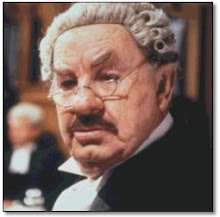Getting the Religion Clause Cart Before the Horse
The argument of these last several Friday postings is that the no-establishment provision of the first freedom of the First Amendment is entirely in the service of the free exercise provision. I should note, at least in passing, that those devoted to the “original meaning” of the First Amendment argue that it was intended to be no more than a guarantee that the federal government would not interfere with the religious arrangements of the states, some of which had legally established churches. They are right about that.
The tangled and incoherent church-state jurisprudence of the last half century, they say, is the product of a misguided effort to produce elaborate legal doctrine from what was no more than a pragmatic guarantee. They are largely right about that, too. As Philip Hamburger, Clarence Thomas, and others have noted, that misguided effort was powerfully driven by anti-Catholic bigotry. All this is true enough, but our necessary concern is with the religion clause as it has been formed and deformed in the past half century.
The deepest deformation is the subordinating of free exercise to no-establishment. Once we forget that no-establishment is a means and instrument in support of free exercise, it is a short step to talking about the supposed conflict or tension between the two provisions. And from there it is a short step to the claim, as it has been claimed in numerous court decisions, that the two parts of the religion clause are “pitted against one another” and must somehow be “balanced.”
And from there it is but another short step to the idea that the no-establishment provision protects “secular liberty” while the free exercise provision protects “religious liberty.” When the religion clause is construed according to this curious inversion, it is no surprise that religious liberty comes out the loser. Any impingement of religion upon public life is taken to violate the secular liberty of the non-religious. Thus has no-establishment become the master of the free exercise that it was designed to serve.
The balance of the article can be read HERE.


0 Comments:
Post a Comment
<< Home